This article originally appeared in our sister brand KITPLANES. It’s part of an ongoing series of articles written for pilots new to the Experimental/Amateur-Built world. Its purpose is to provide a good stepping off point for, shall we say, the homebuilt-curious. Designs to be covered in future installments include the massively popular Van’s RV-6/A and the ageless Kitfox.
By Dave Prizio
This article begins a new series that takes off from our previous articles on buying a used Experimental/Amateur-Built airplane. Where the previous series took a broad look at the general topic of buying a used Experimental, in this series we will focus on one make and model of airplane at a time, going into the kind of detail a typical buyer would probably like to see.
Here are the major topics to consider: The history of the make and model, an overview of the design, what to look for with the specific make and model, engine options, typical avionics, common modifications, performance, and owner support—both factory and user groups. As this series unfolds, we would welcome feedback from our readers so we can make this the best go-to source for prospective used E/A-B buyers.
History
The Stoddard-Hamilton GlaStar made its debut in 1994, powered by a Continental IO-240, but before long everyone was using a larger engine. In fact, not more than two or three customer planes ever got built with the Continental engine, with the Lycoming O-320 and O-360 engines being the most popular choices because of cost and the plentiful supply of used examples. A number of builders opted for various versions of the Subaru auto-engine conversion, but many of these planes have been re-engined with Lycomings after a string of inflight engine failures and other problems.
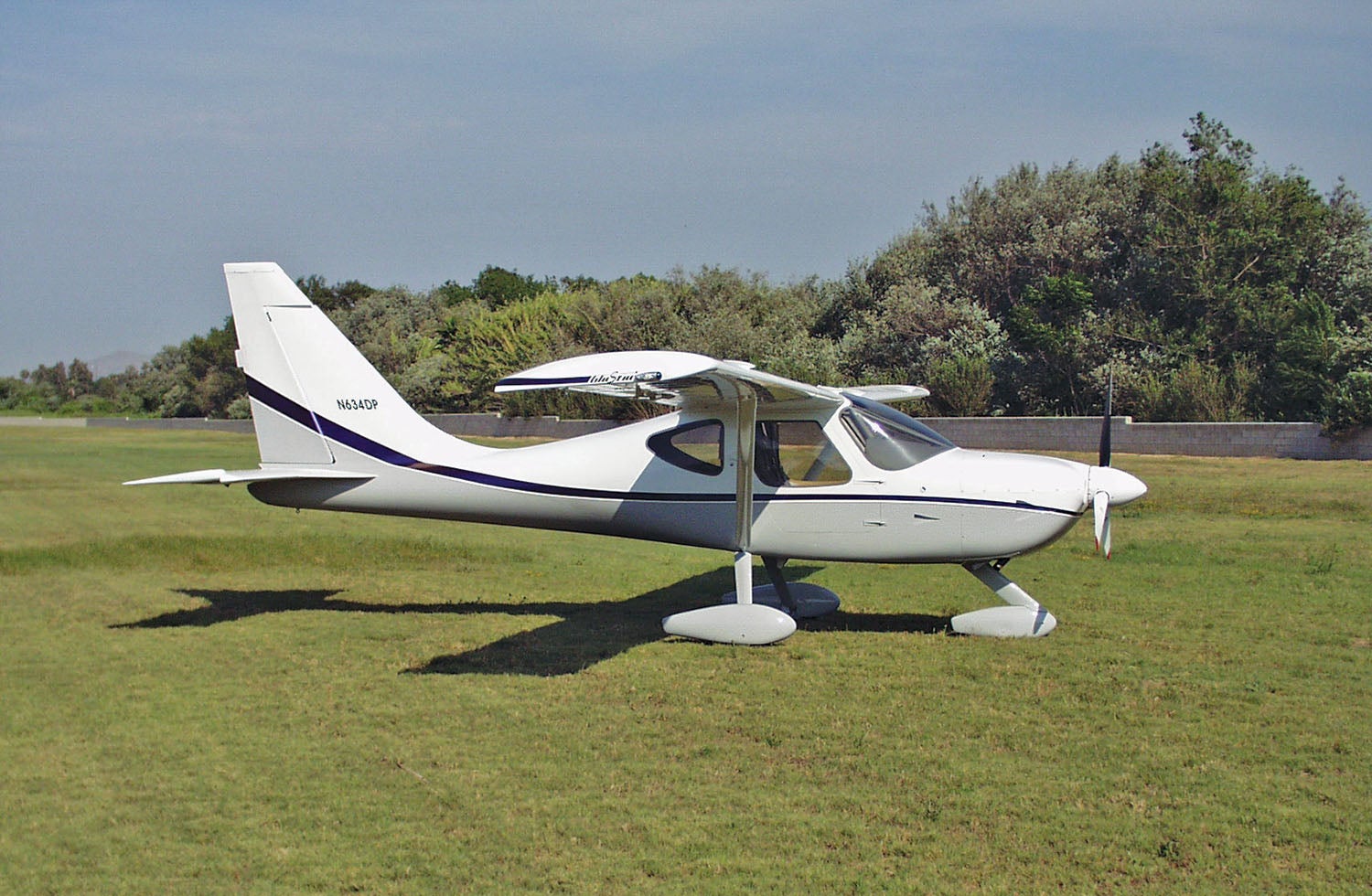
Tom Hamilton was the designer of this popular utility plane, with Ted Setzer doing much of the prototype work and Tom Setzer doing a lot of the detail design work. The GlaStar kit sold very well in its day, with more than 600 of them going out the door by mid 1998, when your author took delivery of his. Unfortunately, Stoddard-Hamilton got into financial trouble shortly after that and was in bankruptcy by 1999. Longtime EAA-er Tom Wathen bought the company out of bankruptcy and formed two new companies, New GlaStar LLC and New Glasair LLC. These two companies were eventually combined into a new company called Glasair Aviation LLC under the direction of Mikael Via. Under his guidance, the design rights for a certificated version of the GlaStar was sold to OMF Symphony that eventually produced a number of certificated airplanes that, unfortunately, did not enjoy a lot of success. However, Glasair used the money from that sale to develop the Sportsman 2+2 and continues to sell this kit today.
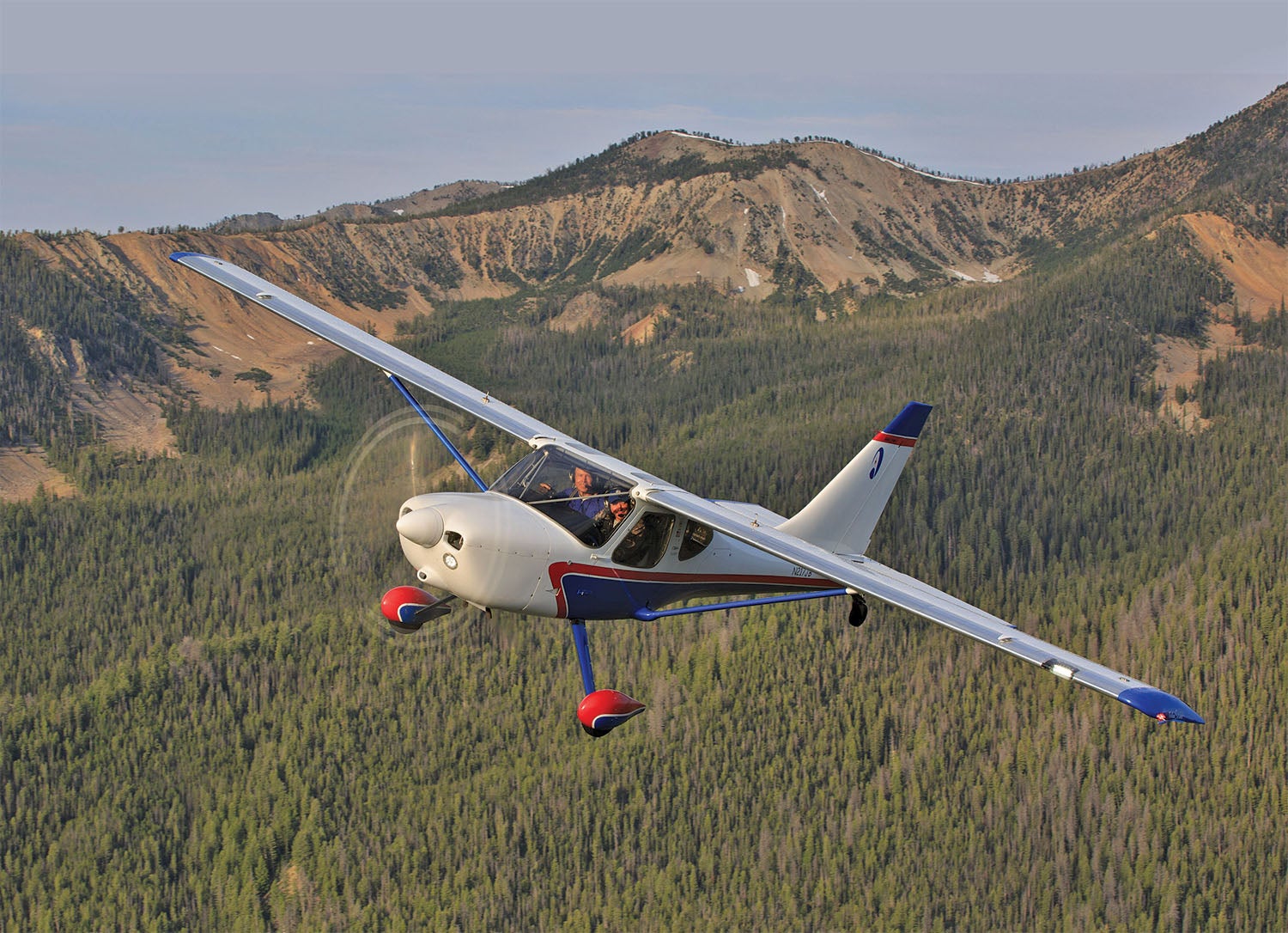
Eventually about 930 GlaStar kits were sold, with an unknown number of these being just tail kits. It is estimated that around 600 whole aircraft have been built, with the majority of these being registered in the U.S., but a significant number also in Canada and Australia. There are also a number of planes in Europe, mostly in the U.K. One even made it to Cameroon, Africa, doing missionary work.
Sadly, when Glasair came out with the Sportsman, they found that the similarity in production costs made it impossible to create enough of a price difference between the GlaStar and its younger brother to keep selling both kits. Thus, even though it did not technically die until 2005, the two-seat GlaStar was effectively done by 2002. At the moment, Glasair Aviation no longer supports the GlaStar except with parts that it may share with the current Sportsman design. Even the fiberglass fuselage molds have been destroyed.
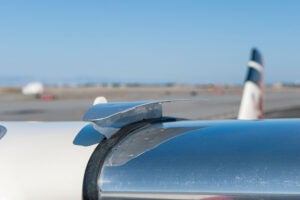
Design
The concept of the GlaStar was a two-place utility plane that could be easily built and easily stored saving the owner money, while delivering a wide performance envelope skewed somewhat towards the low speed range. Easy storage was to be facilitated by folding wings, which became a popular selling feature, but one that was seldom used once the plane was completed. The features that most endeared the plane to future owners were docile stall characteristics, good short field performance, and a claimed 130-knot cruise speed. At the time its main competition was the RV-6 and RV-6A, a design that was clearly faster, but short on useful load and cabin space compared to the GlaStar.
Many people thought comfort and utility were more important than cruise speed, and still do, but once everyone started bumping up the gross weight of the RV-6 to 1800 pounds, against Dick VanGrunsven’s objections, some of the utility advantage disappeared. Both aircraft still enjoy a good reception in the used airplane market, so obviously there was room for both choices.
As the GlaStar left the small-engine concept behind, it became more important to pay attention to the center of gravity, especially with the O-360 and a constant-speed prop. This meant moving the battery as far aft as possible to balance out the weight up front. Even then, some GlaStars would run out of elevator in a full-stall landing, inducing a number of owners to place vortex generators on the bottom of the horizontal stabilizer. A few builders opted for the heavier angle-valve IO-360 engine, but weight and CG considerations made this a poor choice. Most buyers seeking a good used GlaStar prefer to pass on the big angle-valve engine.
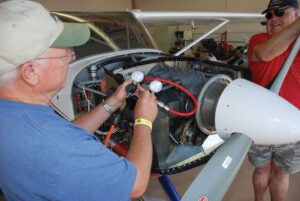
What to Look For
Your buying guidelines should begin with a review of the previous KITPLANES® series on buying a used Experimental airplane. I will not repeat that information here except to say that it is important to do your homework on any used airplane purchase and be sure to get a competent prebuy inspection by someone familiar with the GlaStar.
As with any used Experimental airplane, it is important to review the records with a special eye to the compliance with factory service bulletins. Most of these were likely addressed during construction, but a comprehensive record of compliance it a good sign of a conscientious owner. A complete list of all factory service bulletins can be found online.
Of special note are service bulletins #7 calling for a new strengthened control yoke weldment, #14 calling for added reinforcement in the tail, #43 calling for the addition of header tanks to prevent fuel starvation in long descents, and #49 calling for weld inspection in a limited number of cages that had poor weld penetration.
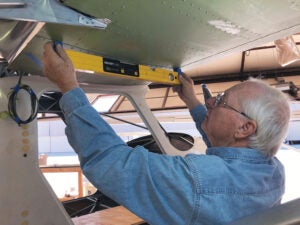
There was also a service bulletin #25 that talked about cages that produced excessive differences in the angle of incidence of the wings, wherein they declared that a variance of 1° was the maximum tolerable variation. However, the truth of the matter is that any variation in excess of 0.1° produces undesirable flying characteristics. Some builders compensated for this by installing aileron trim tabs or adjustable aileron trim, but it is best to check the angle of incidence with a smart level and plan on correcting any discrepancy found by modifying the aft spar pivots.
The GlaStar had very few kits that had improperly heat-treated gear legs that would easily bend. These were quickly identified and fixed. However, the basic design relies on sacrificing the gear legs to protect the cage in case of a very hard landing. For that reason, it is always a good idea to carefully look at the front view of the plane for any signs of a bent gear leg. A ground loop can also bend a gear leg, so it is a good idea to check out taildragger gear with extra care. The good news is that bent gear legs can often be straightened, and replacements are readily available if that isn’t an option.
There are five bulkheads that builders were required to install in the fuselage beginning with the aft end of the baggage area and proceeding toward the tail. There are a number of ways to screw these up, two of which are discussed in service bulletins, but none has resulted in a catastrophic failure to my knowledge. In any case, it is a good idea to have a knowledgeable person help you evaluate the construction of these important items during your pre-buy inspection.
A service bulletin that is easy to miss is #47 that calls for tightened clearances at cable guides. These guides should be fabricated out of 0.025-inch material with a maximum clearance of 0.04 inches. You just won’t see that without taking a hard look at them. This bulletin is important because under higher G loads some aileron cables can go slack, making it easy to come off a pulley. This could result in a jammed control.
Many builders complied with these service bulletins as they were building and may have noted compliance in the builder log. Unfortunately, that information may not be available to a subsequent buyer. Because of that, I would always urge builders to note service bulletin compliance in the permanent aircraft logbook.
Many GlaStars got turned into “FatStars” when builders who added goodies to them were not careful with the little things that can quickly add up. The factory advertised that an empty weight of 1200 pounds was typical for the GlaStar, but I can assure that there are very few such planes in existence. Anything around 1300 pounds is pretty good. Just be wary of those that approach or even exceed 1400 pounds empty. That just doesn’t leave much for fuel and people with a gross weight of 1960 pounds. As with any plane where the gross weight of the builder exceeds the useful load of the airplane, some builders have bumped up the gross weight to make up for it. The GlaStar seems to be able to fly with whatever you can shove in the doors, but expect significantly degraded takeoff and climb performance, especially with an O-320 engine and at higher density altitudes.
Engine Options
The Continental IO-240 of the original prototype was never embraced by the GlaStar builder community. That left the realistic choice of engines to either the Lycoming O-320 (150- or 160-hp versions), or the Lycoming parallel-valve O/IO-360 180-hp engine. In the late ’90s and early 2000s Subaru engines were also popular, but they never met the promises made by those who sold them, forcing many owners to re-engine their planes with Lycomings. (This is a challenging project when you consider all that has to be changed.) As a result, GlaStars that hit the used market with non-traditional engines tend to linger there or sell for much less than those with a Lycoming up front.
A few builders installed angle-valve IO-360 engines to get an extra 20 hp, but these engines were just too heavy to work well, leaving the planes with forward CG and excess empty weight problems, not to mention higher fuel consumption. These problems could be offset by using a fixed-pitch prop, especially a composite prop, but that sort of defeats the purpose of going with a bigger engine. Needless to say, Lycoming clones by Superior or ECI (now Continental Titan) would be suitable substitutes for the same-size Lycoming engines.
Typical Avionics
Most GlaStars were built before the advent of glass panels, so expect to see a lot of “steam gauges” as you look for a used GlaStar. An approach-approved GPS would also be a rare find in a GlaStar unless the owner has upgraded the panel since it was built. Of course, some owners have updated their panels and expect to get a higher price for their aircraft as a result. If you can find such a one, it is a strong inducement to make a deal rather than spend the money on upgrading an older panel. It is always cheaper to let the other guy do the upgrades than to do it yourself, and it saves time.
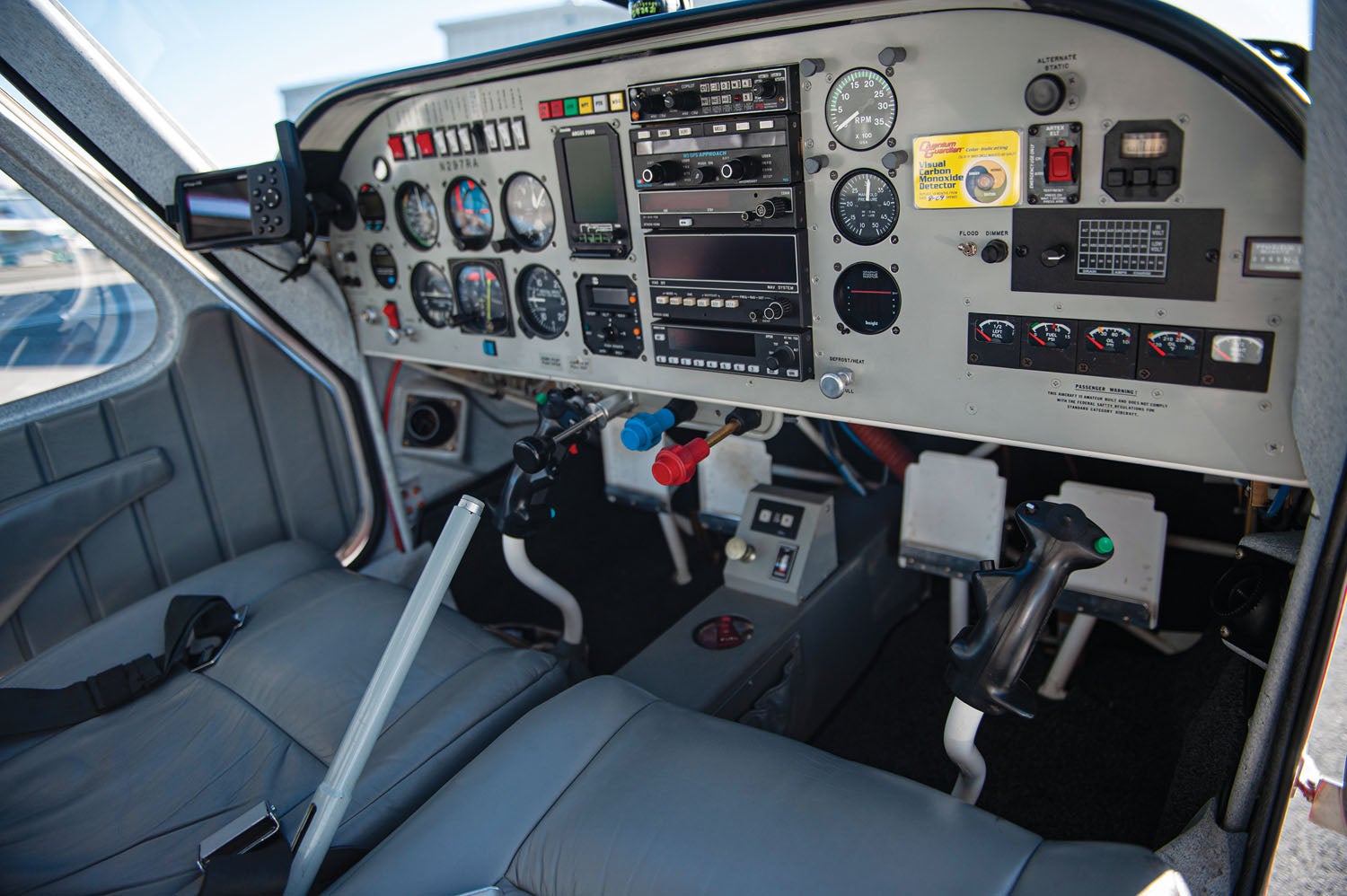
You will see many IFR-legal GlaStar panels if you are willing to limit yourself to VOR navigation, but the utility of such an arrangement seems limited if you have a real need to fly in instrument conditions. Also be sure to check the logbook for the age of the vacuum pump if you are going with steam gauges. These pumps typically fail after 5-600 hours.
If you are looking at a GlaStar based in a less-populated area and flown out of an uncontrolled airport, you may find that the plane is not equipped with ADS-B Out. This will be an immediate expense for you if you need such equipment. Most older planes will also not have a 406 MHz ELT. There is no legal requirement to upgrade the old 121.5 MHz unit, but that frequency is no longer monitored by emergency services.
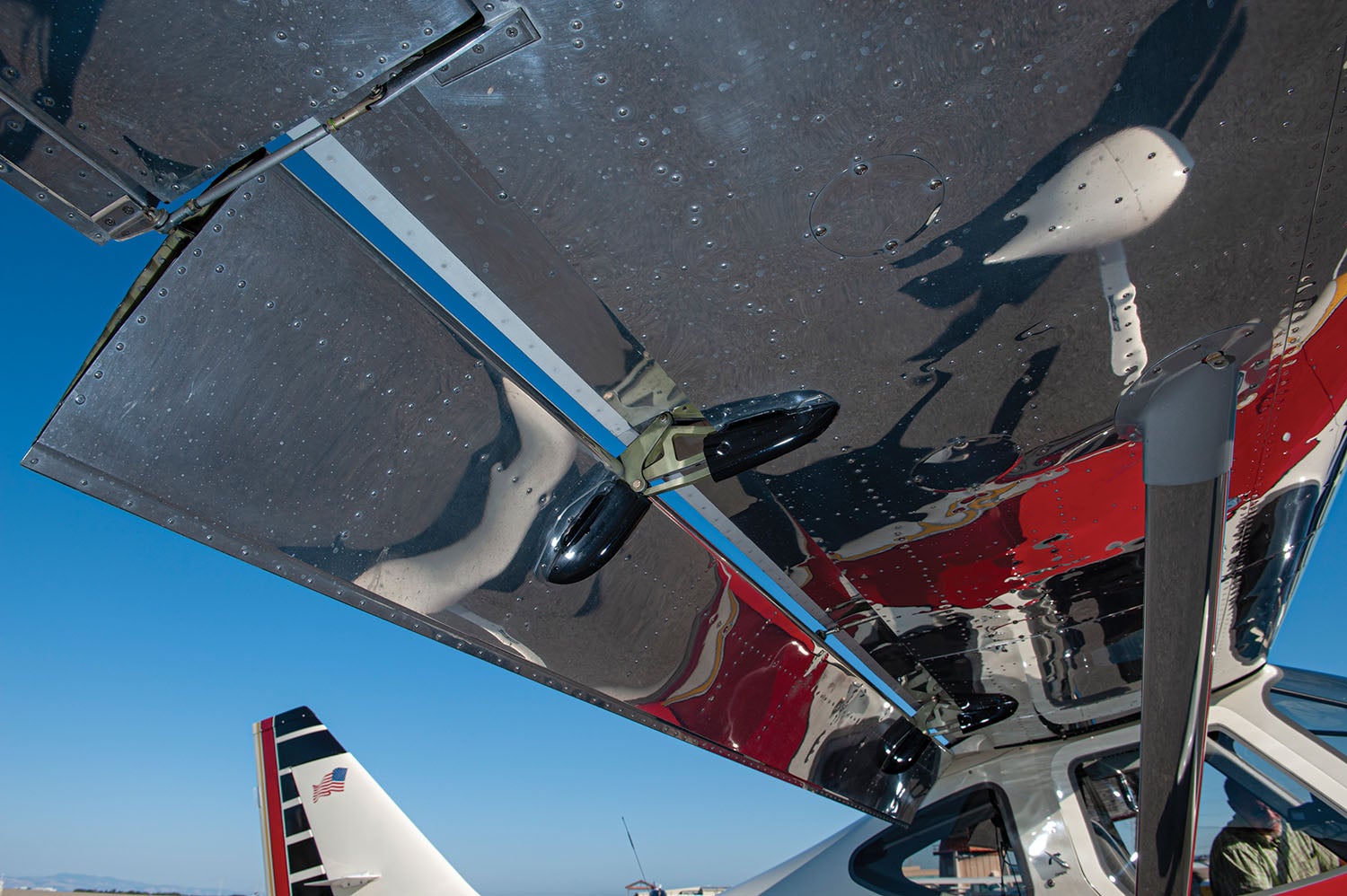
Common Modifications
Since the GlaStar can be built with tricycle gear or conventional gear, it probably isn’t fair to call it a modification to switch from one to the other, and once GlaStars are built few people bother to switch. The good news is that it isn’t very hard to do if you happen to find a good airplane with a gear configuration that you don’t like. Sometimes you can find a builder who set up both sets of gear. You can then put the set you don’t intend to use aside. (But keep it for the next owner!)
Another gear-related option is to upgrade the original 5.00×5 main tires to 6.00×6 tires and wheels. This looks easier than it is, because it requires relocation of the flange that secures the caliper and drilling a second cross bolt through the axle. There are some oversized five-inch tires available, but the six-inch wheels allow for even bigger tires than the popular 6.00×6.
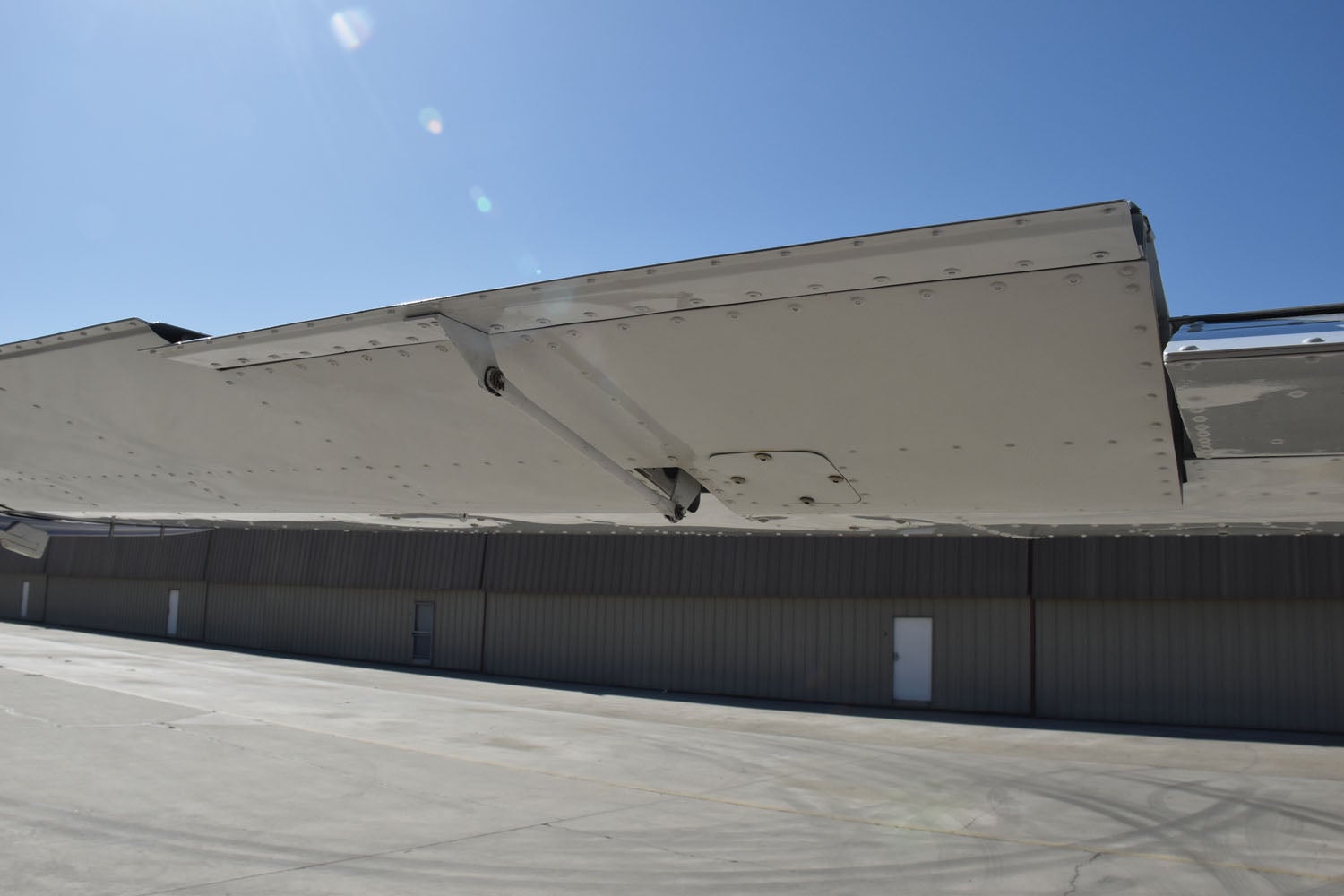
A highly recommended modification is adding an aileron servo tab to the left aileron. This was made standard in the Sportsman and is easily done to the GlaStar. Without the modification the roll forces are rather excessive, especially at high speed, and not well coordinated with pitch forces. The plane handles much nicer with the modification in place.
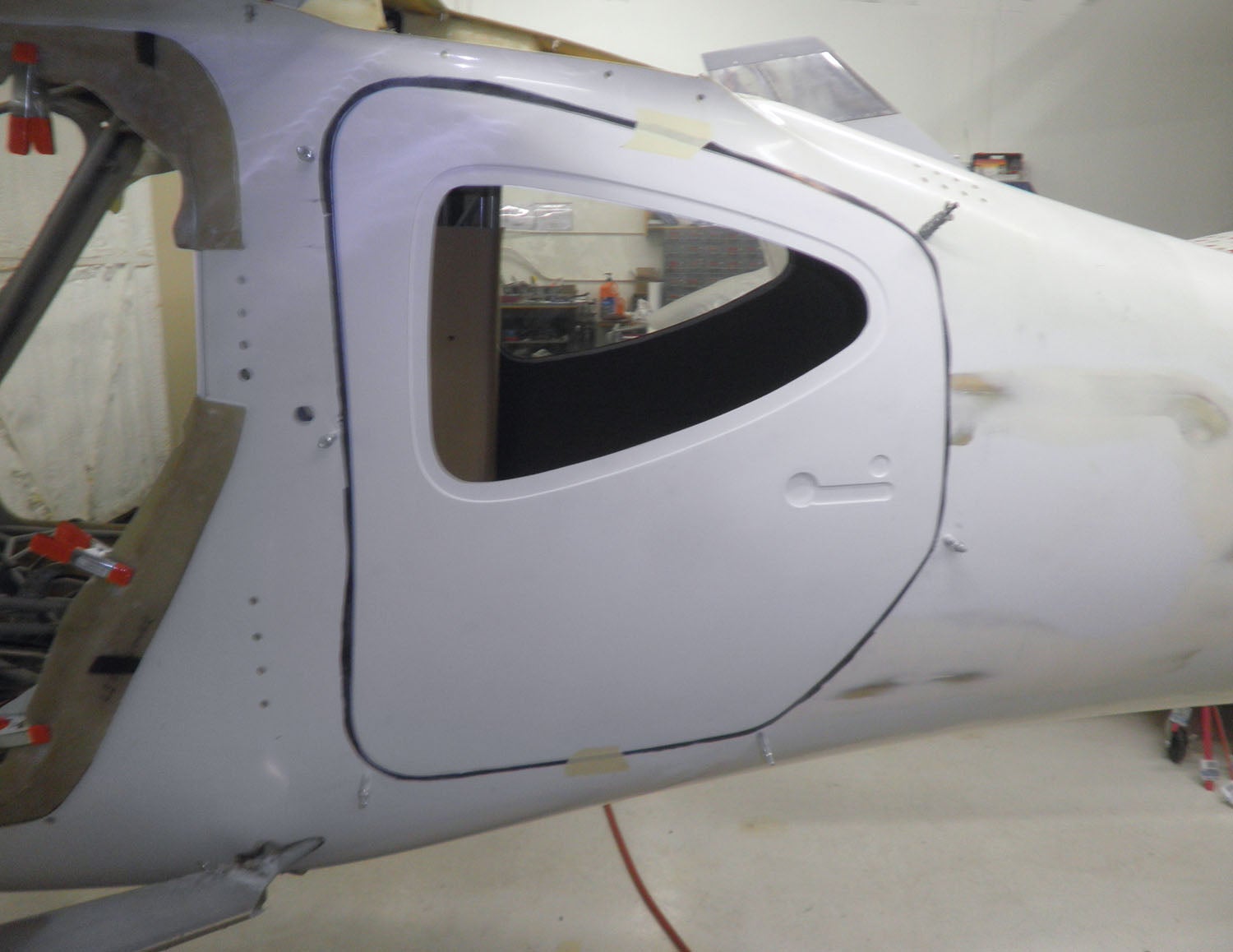
Lastly, a modification that is starting to become more popular is changing the baggage door to a larger Sportsman-type door. This is quite a bit of work, but it makes access to the baggage area much easier. This is popular with people who like to camp or take bikes with them. By comparison, the original GlaStar baggage door seems like a mail slot.
Performance
When the GlaStar was first introduced, the numbers from the factory regarding performance and build times were, shall we say, optimistic. A 75% power cruise speed of 145 knots was touted but never achieved by actual builders. With a 180-hp engine and a constant-speed prop, a cruise speed of 140-142 knots was possible under ideal conditions. With a smaller O-320 engine and a fixed-pitch prop, cruise speeds of closer to 130 knots were about the limit of what was possible. Of course, speeds would vary with gear configuration, wheel pants and fairings, propeller type and pitch, and other factors like intersection fairings.
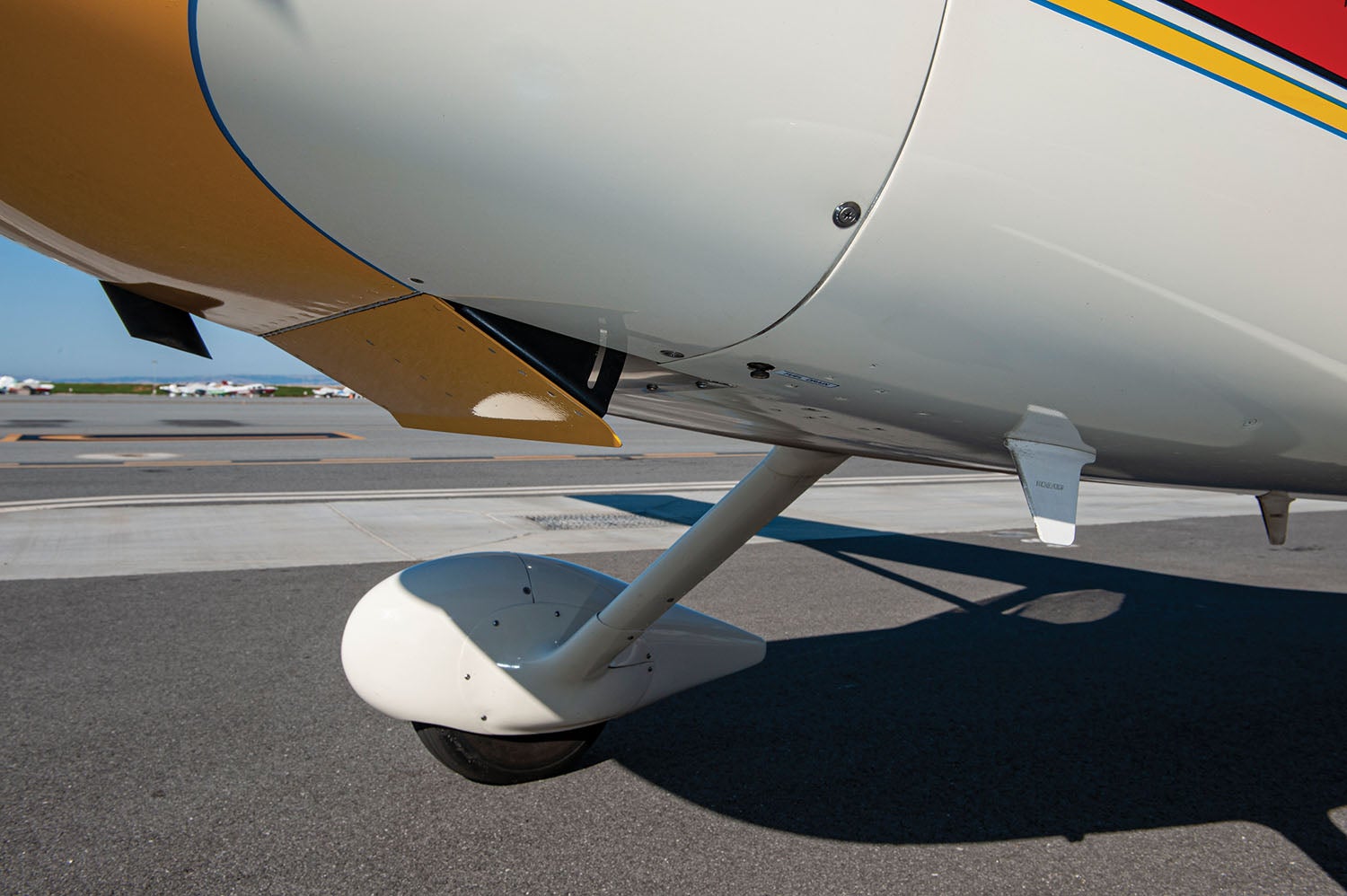
A stall speed of 39 knots was listed but, again, was a bit optimistic—a number like 43 knots more readily achievable by actual owners. That said, the numbers are pretty impressive for a utility airplane. There are certainly faster homebuilts—for instance all RVs except the RV-12—and there are aircraft that will land slower, such as the Super Cub and its many clones. But the unique capabilities of the GlaStar are hard to match. You can put some fat tires on your GlaStar and land on a sandbar for a day’s fishing. You can do that with an RV-8 once, but you will have to walk home. You can make a Super Cub go 130 knots if you point the nose straight down, but…you get the idea.
A real performance advantage that may go unnoticed by many potential buyers is the GlaStar’s crashworthiness. The steel cage that surrounds the pilot and passenger makes the airframe very robust, and the high wing and two large doors make it possible to extract yourself from an overturned plane with relative ease. To be sure you can still do yourself in with a GlaStar, but you will have to work at it.
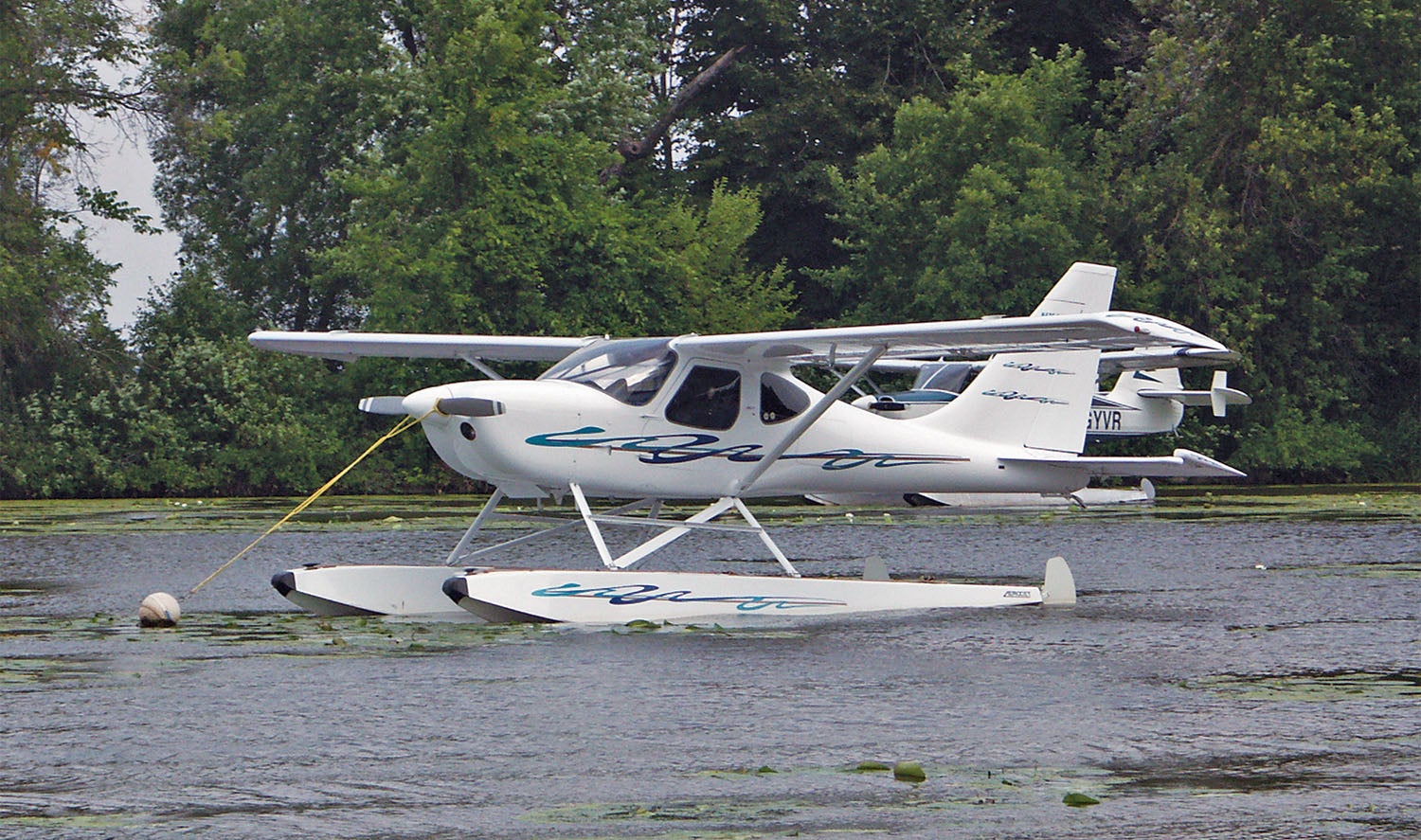
Performance improves with power—no surprise there. Thus, planes with the O-360 engine will command a premium, as will planes with a constant-sped prop. This means that a buyer who plans to fly where the density altitude is high will really want to limit their search to a plane with 180 hp. At lower levels the 150 and 160-horse engines will do a great job of getting you around economically, but at 10,000 feet density altitude there is no substitute for cubic inches.
Owner Support
Owner support is a mixed bag at this time. The Glasair Aircraft Owners Association (GAOA) is active and strong with many members who are glad to show a newcomer the ropes and offer support. The association includes Glasair, GlaStar, and Sportsman owners and builders, but there are plenty of GlaStar owners and builders within the ranks, some with 20 years or more of building and flying experience.
Factory support has the potential to get a lot better. One of the last things the management did was to throw away the molds for all of the fiberglass parts for the GlaStar. No one thought there was any chance that there would ever be a factory-new GlaStar again, but the molds were the only source of major fiberglass parts in case of a serious wreck. At the same time, the company announced their official end of factory support for the GlaStar.
But that’s not the end of the story. New management at Glasair Aviation has pledged to support the two-seat GlaStars going forward, and since the GlaStar shares many parts with the Sportsman 2+2, there are many components still available that are common to the two. Between that and three private shops that work on GlaStars, there isn’t much that can’t be repaired or upgraded if an owner would need such services.
Values
As with any discussion on value, there’s a wide range in the GlaStar world. Nice, clean, period-correct examples can be found with asking prices around $60,000. The market values the 160-hp and 180-hp engines over the smaller ones, and strongly values conventional aircraft engines over auto-engine conversions. There have been newly completed GlaStars for sale with six-figure asking prices, but that’s at the very high end of the spectrum. As always, individual aircraft condition (build quality and maintenance) and equipment are part of the value equation.
Conclusion
The GlaStar is a great two-place plane. It does not so much do one thing extremely well as it does a lot of things pretty well, much like a Cessna 182. With their limited production of 600 or so planes flying and their popularity it may take some time to hunt down the GlaStar you want, but it is worth the effort.
Photos: Richard VanderMeulen, Carlos Emmons, Dave Prizio, and Jonathan Apfelbaum.
Owner Feedback
We asked GlaStar builders and owners for their perspective on the design. Here are a few of their responses.
Garth McGearty
I love the GlaStar. Mine was built by Richard March near San Diego. Originally N163DM, Richard made a beautiful job of it, and we have had no maintenance issues since we bought it three years ago for $56,000 (USD). The only thing we have changed on the aircraft is fitted Desser 380-150×5 tires. The larger tires have given us improved ground handling all ’round and they work a whole lot better than the standard tires on soft grass airstrips that prevail here in New Zealand. It is a taildragger with an O-360 and a fixed-pitch Sensenich 76-inch prop. It cruises about 135 knots with wheel fairings. It burns between 32 and 36 liters per hour (8.5 to 9.5 gph) from sea level to 8000 feet. The good points: It’s wonderful to fly and it handles very well, it has very safe low-speed performance, it is a good performer on short strips, and has a huge baggage capacity with full fuel and two up. You get to carry all the extra stuff for your Van’s RV mates. Oh, and the fuselage will never corrode. The bad points? Can’t find any bad points! Okay, access into the aircraft is a bit of an issue for larger and less flexible people. A sliding seat arrangement would make my day. I would like some baggage compartment tie-downs and restraint equipment fitted permanently. In our case buying the aircraft from a builder and owner was a piece of cake. Richard allowed us to take the aircraft away for a thorough airframe and engine inspection—a must with any purchase. De-registration, disassembly and shipment to New Zealand was handled by a professional company near San Francisco. Because of the folding wing assembly and removable tail plane, reassembly was a piece of cake and was completed in two days by two people. When you can’t wait to get your aircraft shipping takes forever!
Wayne Flower
My plane is not flying having very recently purchased an unfinished kit. I have been interested in this plane since they rolled out the design. At that time, the numbers for the plane were good, nothing really stands out, but also no real weaknesses in those numbers. It is well rounded. Now after all of these years, those numbers are unchanged, but she has become more attractive with age as there is a solid base of planes out there flying. They are a known item and have a very good safety record. They have active factory support as well as a large group of owners here to help with issues as they may arise. That is huge in my humble opinion. What are there, 500 flying examples more or less? That is impressive. I can’t say that I was attracted to the plane because it has the steel cage, but I do feel this is a bit of a bragging point for me now. It certainly has proven itself to be up to the task of protecting the occupants. I have a friend that was killed in a Thorpe that I think would have lived many more years had he had a cage over his head when his plane went inverted on a landing. It doesn’t hurt that she is a good looking plane and is also very versatile with different landing gear options, decent STOL abilities and lots of interior space. I’m taller than the typical FAA pilot, I simply do not fit in a lot of aircraft, not a problem with this plane. I don’t have to fold myself up, or slip down in the seat. It is SO nice to have interior space. I would stress that KITPLANES talks a little about getting fully checked out in a new aircraft regardless of category or type. After reading through the accident reports for the GlaStar several are related to people that simply were brand new to the aircraft, a pretty common scenario in accident reports.
Alex Nelon
My GlaStar is new to me, and I am new to flying the type. From the first glance perhaps 15 years ago, I knew it was exactly what I wanted for the years after my retirement. I just flew the first short trip in the airplane and saw an honest true airspeed of 130+ knots at 65% power from the O-360 and fixed-pitch Sensenich. To write that I’m happy would be an understatement. Fuel economy seems to be as advertised. Everything about this airplane points to its being the right choice for me. The irony is that the first GlaStar I saw at a Florida fly-in all those years ago is the airplane I now own.
Rick Beebe
I bought my GlaStar three years ago from the builder’s son. The builder finished the plane in 2001 and, after a few years of flying, decided to build something else. I believe the GlaStar was his third build. The son is a corporate pilot who hoped his kids would want to learn to fly in it. When they didn’t, he decided to part with it. The purchase saga has so much kismet, it’s clear I was meant to have this bird. I owned a Piper Warrior for 10 years, and while it was a nice plane, I was yearning for something a bit faster. My wife was having trouble climbing up on the wing, and I hated having only one door. So a high wing with tons of baggage space and more speed was my target, and the GlaStar meets it perfectly. I was also only interested in a homebuilt because I wanted to be able to do all my own maintenance. The plane is easy to work on. It’s well designed and relatively fast for the fuel it burns and the amount it can carry. Of course I’d love another 30 knots, but that’s out of my price range. I also love the visibility. I’m not a fan of the seat design. Sliding the back is very difficult, and the angle is not optimum for either my wife or me. Mine has the original baggage door, and that’s too small. I’ve been eyeing the Sportsman door mod, but it’s expensive and may be beyond my skill level. So for now I just eye it. It’s a little difficult for my wife to get into because the seats are so high and she has trouble getting her leg over the stick. I guess I could have solved that by buying a Cardinal. I have a tricycle gear with Lycoming O-320 and Hartzell constant-speed prop. It cruises at 125 mph IAS. I love that even with two of us on board on an 85° day it will still climb at over 1000 fpm. Maintenance has been excellent. The seller rebuilt one cylinder before he sold the plane. It has just over 600 hours on it now, and I’ve really had no maintenance costs other than oil and tires. My insurance costs are low. Roughly $1000/year for $60k hull and $100k liability. Basically the same as what I was paying for the Warrior. Like any homebuilt, it’s best to get someone with experience to help you do any prebuy. We’re blessed with experts on the Glasair Aircraft Owners Association in every corner of the country. While looking for a GlaStar, I sought the help of Alan Negrin, Dave Prizio, and Joe Gauthier. Dave warned me off one that looked really good in the ads. Joe helped with the prebuy on the one I bought. First thing he did was take the horizontal stabilizer off. The seller said, “I didn’t know it did that.” He’s not mechanically inclined and had an A&P do all his maintenance, and he was pretty sure that guy didn’t know the tail came off either. And we found that the pins were loose.
Alex Kulpecz
I started building a GlaStar kit many years ago when posted in the UK (sold it cause it was just impractical to have the wings in the UK and fuselage in the USA, then trying to mate them). When I moved back to the USA, I bought a steam-gauge GlaStar and flew her for 8 years. Although having an SR20, then an SR22 on order while living in Europe, I never pulled the trigger, and stuck with Glasair and bought the GlaStar. (I now fly a G3X Sportsman.) What I loved about my GlaStar was it flew and handled incredibly well…after building some confidence in a Super Cub in Alaska (week of training), coming home to the GlaStar with its big rudder and ability to slip into grass strips became commonplace (what fun!). The extended-range tanks and autopilot allowed for spectacular and comfortable cross-country flying. My trike GlaStar with the Lycoming 180-hp O-360 and Hartzell constant-speed prop gave great performance…typical cruising in the mid-120s (knots) at 7-8 gph at 8000 feet. Climb performance was very good at sea level in hot Houston (+1000 fpm) and cool Telluride (200-300 fpm at 9070 feet). A very economical, capable, solid airplane. As far as my dislikes: I knew I was buying a two-seat plane in the GlaStar and it fit my mission then. But now with grandkids, I began to miss the ability to take others along for some fun sightseeing. I never did like the nose gear arrangement on the trike with a tiny nosewheel and the rather low clearance of the prop (7-8 inches), so modified it with a larger nosewheel to bring the clearance up to 11 inches. I had most of my maintenance done with a local A&P. I had what I consider normal maintenance issues with radios, some vacuum components needing replacing, and a starter. No issues at all with the airframe, controls, windscreen—so with the exception of the nosegear, very happy about minimal maintenance costs. I thought insurance was reasonable for then a low-time pilot flying an Experimental off grass strips…always roughly $1200-1600 a year. I think the GlaStar is an exceptional value at $60-70,000 for a well-designed/built aircraft with relatively low hours, great performance, and low maintenance costs. I look at the GlaStar as being “best of breed” for hitting the sweet-spot for price, versatility, performance, and fun.
Jack Will
I too am very impressed with the GlaStar handling. It is very efficient for cross country, and even on tricycle with small tires gravel or grass strips are no problem. I have 180 hp with a ground-adjustable WhirlWind—an excellent combination for the GlaStar I think. Maintenance costs are pretty low, fuel injection and electronic ignition don’t need maintenance (except I change all 8 plugs at annual for $98). I bought a new hardware kit for the prop this year, new bolts, washers, Nordlocks, for $43. I did an oil & filter change before I started out for Oshkosh and another in Idaho on the way back and had no issues the whole trip. I do have aux tanks, and although I carried an 18-gallon Turtle-Pac for the Ketchikan to Bellingham leg, I ended up only burning just over 33 gallons both down and back (about 550 nm each way). I see 128 knots true airspeed consistently while running LOP. I was a little concerned about cooling in the hot weather down south, but it turned out to be not an issue—it was 89 degrees when I left Soldotna in July.
Kathy Sutton
Our GlaStar, Arielle, has taken us from our home base near Toronto, Canada, to all corners of the continent. Since our first flight in 2010 (after 14 years of building), my husband, Steve, and I have flown to Smiley Creek, Idaho, five times. Arielle has taken us to 26 states so far, including California, Washington, Texas, Utah, Florida, and New York, as well as both ends of Canada. Steve and I take turns in the left seat. As of this summer, between the two of us, we have logged over 500 hours on our beautiful Arielle. She is not only fast, she also has plenty of room for camping gear and other baggage. But the best thing about Arielle is that she’s allowed us to meet a great group of like-minded aviators. From Oshkosh to Rough River to Columbia and Smiley Creek, flights in our GlaStar have introduced us to a whole lot of terrific people from all over the continent—many of whom we now count as good friends. Complaints? Personally, I’d say it would be nice if the muscle power to deploy the flaps was a little lighter, but that said, I have nailed the technique (power off, nose up, slow down to 60 knots or less, then go for it). With our Lycoming O-360 engine and Aero Composites constant-speed prop, we cruise at 140 knots (65% power and 6000 feet, rich of peak EGT mixture settings.) It’s a tricycle-gear GlaStar. Maintenance costs are very low, even compared to the Cessna 150 we flew for 400 hours while building the GlaStar. We do all the routine maintenance ourselves—oil changes, annuals, tires & tubes, and so on. We hired someone to do a mag change at 500 hours, but no other major money spent on the plane. It’s been over 20 years since Steve and I decided that the GlaStar was the project we wanted to build and fly. No regrets! We looked at a lot of other kit aircraft before settling on the GlaStar, and the decision was the right one for us. Our choice reflected our mission, which was to have a good-looking and relatively fast utility aircraft that we would both be comfortable flying on long cross-countries for many years. The GlaStar has served us very well in this regard.



































